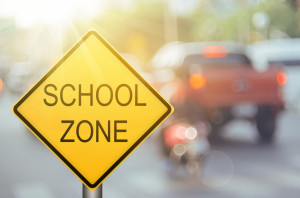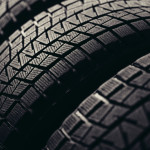School Zone Safety: How Drivers and Children Can Protect Themselves
Have you ever accidentally blown through a school zone, only to realize too late that you were speeding or not paying attention? It’s something nearly every driver has done at some point, especially since school zones can sometimes be difficult to see. Students may not always cross at crosswalks, or even more dangerously, they might be darting across the street at unpredictable moments. This is why it’s vital for drivers to be extra cautious when traveling through school zones, particularly during the hours when students are most active.
nearly every driver has done at some point, especially since school zones can sometimes be difficult to see. Students may not always cross at crosswalks, or even more dangerously, they might be darting across the street at unpredictable moments. This is why it’s vital for drivers to be extra cautious when traveling through school zones, particularly during the hours when students are most active.
Unfortunately, not everyone pays attention to the important rules around school zones. According to the SafeKids coalition, nearly two-thirds of drivers speed through school zones before and after school when foot traffic is at its peak. While many drivers are conscientious and careful, the reality is that too many aren’t. It’s crucial for all drivers to stay focused and understand the potential consequences of inattention or speeding in these areas.
In this blog, we’ll explore some essential tips to help drivers and children stay safe around school zones. Whether you’re a parent dropping off your child, a commuter, or a pedestrian, we all share the responsibility of ensuring our kids get to school safely. Let’s break it down:
What Drivers Should Do
Slow Down and Stay Alert The most important thing any driver can do in a school zone is to slow down. Residential neighborhoods and school zones often feature lower speed limits, and these limits are there for a reason. Children may be walking, biking, or running across the road unexpectedly. It’s essential to drive at the speed limit or even slower, especially during school drop-off and pick-up times when students are most likely to be out. Slowing down is not just about avoiding a ticket; it could make the difference between a close call and a tragedy.
Look Out for Children at Intersections Always be on the lookout for children at intersections, even if you don’t see a crossing guard. Kids may not always use crosswalks or follow the “rules of the road” as adults expect. It’s common for children to cross at unpredictable locations, especially near their school. This is why vigilance is key—slow down and make sure the intersection is clear before proceeding, particularly before and after school when foot traffic is heaviest.
Never Pass a School Bus with Flashing Red Lights When a school bus has its red lights flashing, it’s not just a signal to stop—it’s a signal that children are either getting off the bus or getting ready to board. Children are taught to cross in front of the bus, and they may not always be visible from a distance. Never, under any circumstances, pass a bus when its red lights are flashing, even if the road seems clear. The lives of children depend on drivers adhering to this rule.
Minimize Distractions Inside Your Vehicle It’s easy to get distracted while driving, but distractions are dangerous, especially when you’re in a school zone. Reduce distractions inside your vehicle, including lowering the volume of the radio and putting your phone down. Texting, checking social media, or talking on the phone can take your focus off the road, making it harder to notice a child darting out into traffic. When driving through a school zone, stay 100% focused on the task at hand: keeping kids safe.
What Children Should Do
Look Both Ways Before Crossing the Street It’s one of the first safety rules kids learn—always look both ways before crossing the street. Even if they are walking with an adult or near a crossing guard, they should still be cautious and aware of their surroundings. Ideally, children should cross with an adult until they are at least 10 years old, as young children may not always be able to judge traffic or pedestrian dangers properly. An adult can provide extra supervision and help them navigate potentially dangerous situations.
Use Crosswalks and Traffic Signals Always encourage children to cross streets at designated corners and crosswalks. These are the safest places to cross since they are typically equipped with traffic signals to help manage pedestrian traffic. When possible, choose routes to school that have crossing guards. A crossing guard is trained to help children safely cross the street and can be a key factor in preventing accidents.
Never Run into the Street or Cross Between Parked Cars Children should be taught to never run into the street, even if they think it’s safe. This includes running across the road to catch up with a friend or reaching for a ball. Running into the street can put children in danger of being hit by a car that is unable to stop in time. Similarly, crossing between parked cars is also dangerous, as drivers may not be able to see them. Always wait for an open, clear path before crossing.
Cross in Front of the Bus, Not Behind If a child needs to cross the street in front of a bus, they should walk to a point at least 10 feet ahead of the bus to ensure the bus driver can see them. Never bend down to tie shoes or pick up an object while crossing in front of the bus, as this could cause them to be out of the bus driver’s sight. It’s important that children know to wait until the bus has fully stopped and the driver signals them to cross.
School zone safety is everyone’s responsibility. Drivers must slow down, remain alert, and follow the rules of the road, while children must be taught to cross safely and stay visible. By working together—drivers exercising caution and children following safety rules—we can all contribute to making school zones safer for our children.
Let’s all be proactive about school zone safety and make sure our kids have a safe route to school. After all, paying attention to school zone safety is not just about avoiding penalties; it’s about protecting lives—your own and others around you.






